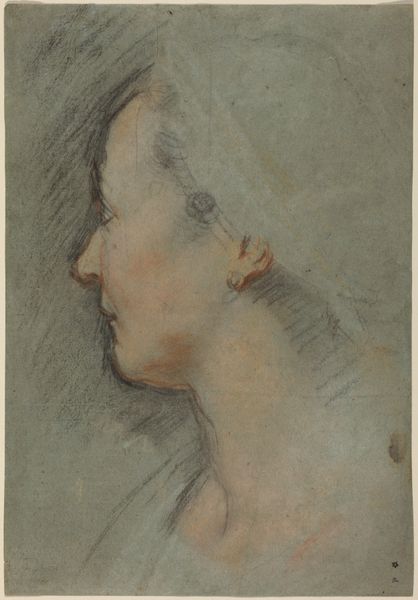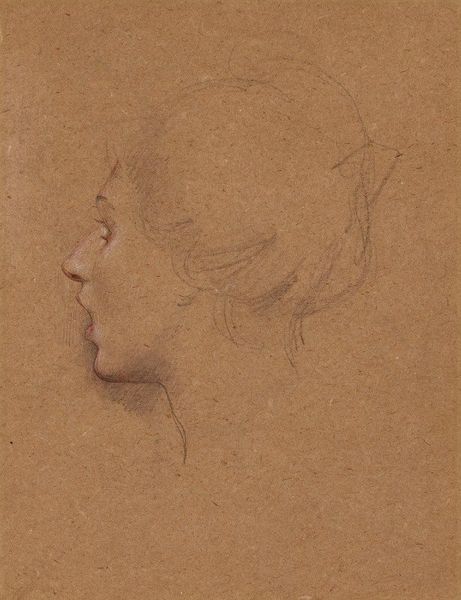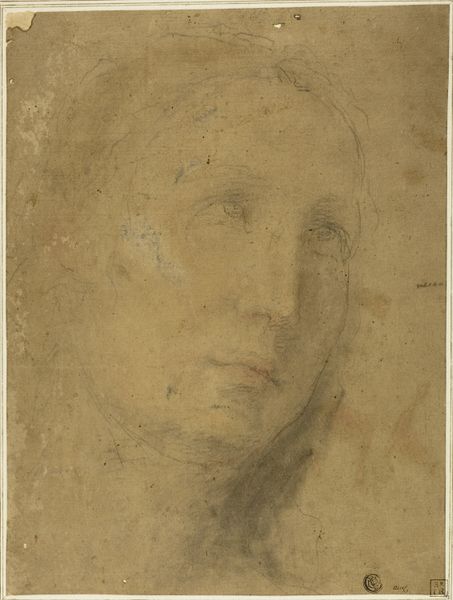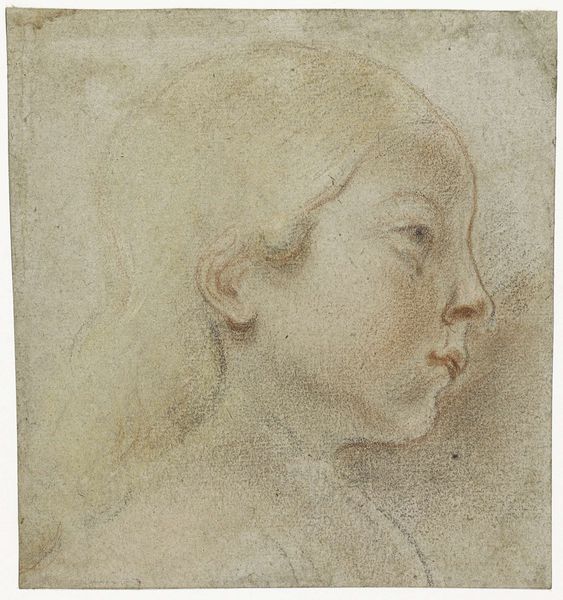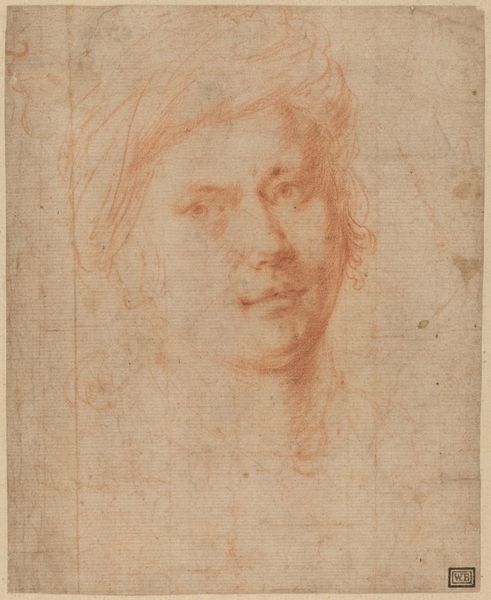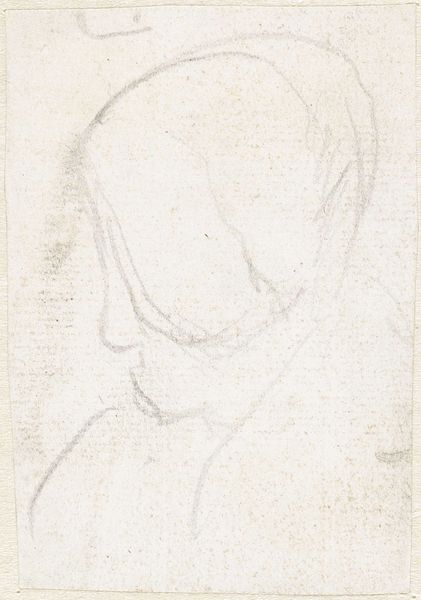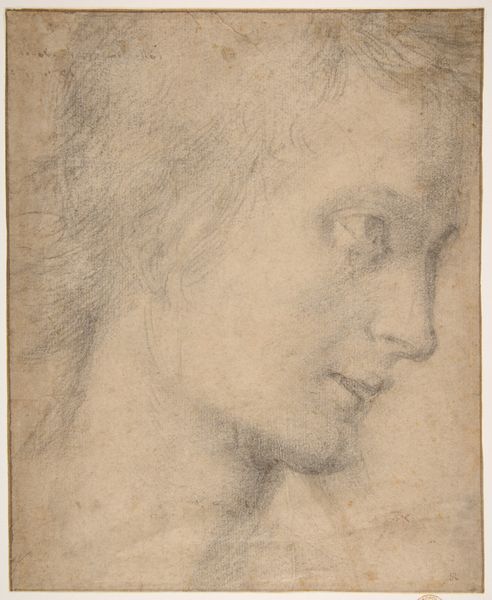
drawing, graphite, charcoal
#
portrait
#
drawing
#
self-portrait
#
charcoal drawing
#
mannerism
#
figuration
#
graphite
#
portrait drawing
#
charcoal
#
italian-renaissance
Dimensions: 306 mm (height) x 227 mm (width) (bladmaal)
Editor: Here we have "Woman's head in profile to the left," a drawing created sometime between 1528 and 1612 by Federico Barocci. It's rendered in charcoal and graphite. I find the line work really intriguing; it's almost as though the head emerges from the paper itself. What do you make of Barocci’s approach to form in this piece? Curator: Notice the dynamism achieved through the layering of graphite and charcoal. The contour lines, rather than simply defining the form, seem to vibrate. Consider how the artist uses hatching and cross-hatching, particularly around the forehead and neck. These aren't just methods of shading, but tools to create a sense of volume and, indeed, a vibrant energy within the static image. Editor: That makes sense. The way the lines build up definitely creates depth. Is the loose, almost unfinished quality of the background significant? Curator: Precisely. The figure is not isolated, but integrated with the surrounding space. This blending of figure and ground pushes against classical ideals of distinct forms. How might we consider this effect? It introduces ambiguity. Is it a fully resolved portrait, or an exploratory study? The lack of resolution invites the viewer to participate in completing the image. It's about the potential for form, not simply its representation. Editor: So, it's almost like we're seeing the artist's process. This emphasis on process gives a great sensibility for Barocci's practice. Thanks for pointing that out. Curator: Indeed. Examining the formal relationships allows us to glimpse the artistic choices at play. Editor: This has definitely changed my understanding of what I thought was a straightforward portrait. Curator: Visual analysis enables us to see beyond the subject to engage with the very nature of representation.
Comments
No comments
Be the first to comment and join the conversation on the ultimate creative platform.

